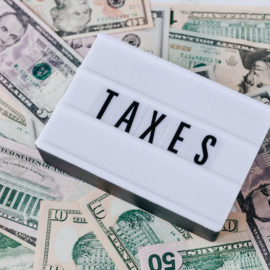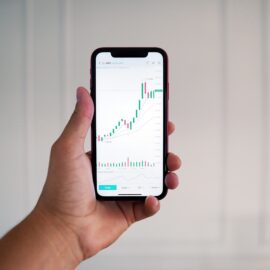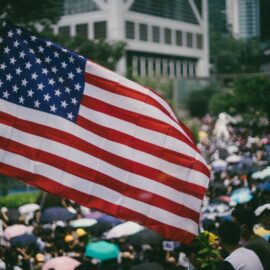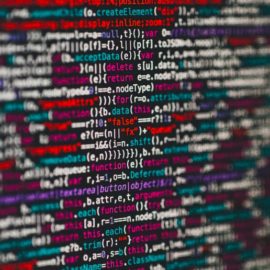
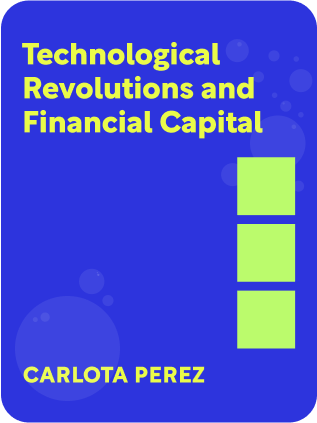
This article is an excerpt from the Shortform book guide to "Technological Revolutions and Financial Capital" by Carlota Perez. Shortform has the world's best summaries and analyses of books you should be reading.
Like this article? Sign up for a free trial here .
What was the first industrial revolution? What happened during the first industrial revolution and what technologies created change?
The first industrial revolution is considered to be when the first machinery was invented that allowed work to be mechanized. It is also when there was the introduction of the iron industry.
Read more about the technologies and events that lead to the first industrial revolution.
The Five Revolutions of the Past 250 Years
In Technological Revolutions, Carlota Perez outlines five revolutions that each upended the economy. We’ll summarize the new technologies that appeared, the infrastructures enabling the revolution, and new principles that became common wisdom.
When we think of industrial revolutions, we often think of major machinery, factories, and more. But the 1st industrial revolution actually happened way before that.
The First Industrial Revolution – 1771
New technologies and industries of the 1st industrial revolution
- Mechanized cotton industry
- Wrought iron
- Machinery
New or redefined infrastructures
- Canals and waterways
- Turnpike roads
- Water power
“Common-sense” innovation principles of the 1st industrial revolution
- Factory production
- Mechanization
- Productivity, time keeping, time saving – Taylor’s scientific management
- Fluidity of movement (through waterways)
- Local networks
Other Industrial Revolutions
Here are the other four industrial revolutions:
Steam and Railways – 1829
New technologies and industries
- Steam engines and machinery (made in iron, fueled by coal)
- Iron and coal mining
- Railway construction
- Rolling stock production
- Steam power for many industries
New or redefined infrastructures
- Railways (using steam engine)
- Universal postal service
- Telegraph (mainly nationally along railway lines)
- Great ports, worldwide sailing ships
- City gas
Steel, Electricity, and Heavy Engineering – 1875
New technologies and industries
- Cheap steel
- Steam engine for steel ships
- Heavy chemistry and civil engineering
- Electrical equipment industry
- Copper and cables
- Canned and bottled food
- Paper and packaging
New or redefined infrastructures
- Worldwide shipping in rapid steel steamships
- Worldwide railways
- Telephone (mainly nationally)
- Worldwide telegraph
- Electrical networks (for industrial use)
Oil, Automobile, and Mass Production – 1908
New technologies and industries
- Mass-produced automobiles
- Cheap oil and fuels
- Petrochemicals (synthetics)
- Internal combustion engine
- Home electrical appliances
- Refrigerated and frozen foods
New or redefined infrastructures
- Networks of roads, highways, airports
- Networks of oil ducts
- Universal electricity
- Worldwide analog communications
Age of Information and Telecommunications – 1971
New technologies and industries
- Cheap microelectronics
- Computers, software
- Telecommunications
- Control instruments
New or redefined infrastructures
- World digital telecommunications
- Internet and e-services
- Electronic mail
- High-speed physical transport links
A key point of the book is that the technological revolution not only shapes the economy but also social mindsets. In this case, information technology allowed distribution at zero marginal cost, which allowed for the proliferation of niches and emphasis on diversity.
In the past, distribution used to cost a lot of money – newspapers had to be printed, retail stores needed rent. Thus producers benefited from large economies of scale, encouraging homogenization of consumption.
All five of the industrial revolutions, from the first to the most recent, ushered in major changes for the economy and the human population.

———End of Preview———
Like what you just read? Read the rest of the world's best book summary and analysis of Carlota Perez's "Technological Revolutions and Financial Capital" at Shortform .
Here's what you'll find in our full Technological Revolutions and Financial Capital summary :
- What happened during the 2000 tech bubble and the 2002 crash
- The 5 technological revolutions that reshaped society since 1771
- How you might be able to predict and prepare for the next technological revolution

